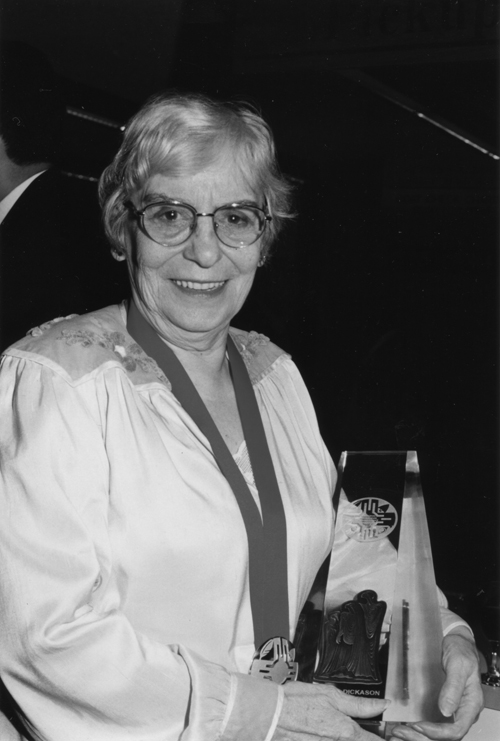
Fired across the bow of Canadian historiography - OLIVE PATRICIA DICKASON
OLIVE PATRICIA DICKASON
Section 64, Range G, Grave 123 (Ed,Hist, J & Lit)

Olive Patricia Dickason was born on March 16, 1920 in Winnipeg, Manitoba. After losing everything during the Great Depression, Dickason’s family moved to the Interlake region, where she, her sister and her mother trapped and fished to provide food for the family.
Dickason finished high school in Saskatchewan and went on to complete a BA in French and Philosophy at Notre Dame College, an affiliate of the University of Ottawa.
Dickason first became aware of her Métis ancestry as a young adult upon meeting some Métis relatives in Regina. She began a 24-year career in journalism at the Regina Leader-Post and subsequently, worked as a writer and editor at the Winnipeg Free Press, the Montreal Gazette, and the Globe and Mail. She promoted coverage of First Nations and women's issues.
In 1970, aged 50, Dickason entered the graduate program at the University of Ottawa. She struggled with faculty preconceptions regarding Aboriginal History, including arguments that it did not exist, before finally finding a professor to act as her academic advisor.
Dickason herself later recalled that when she started work in the field, her professors were puzzled. " 'What on earth do you want to work in that area for? There's no historical evidence.' The Indigenous peoples were an oral society and without written documentation, you can't have history. That was the attitude."
It was precisely this attitude that she felt driven to change – to prove that Canada, indeed North America, had been home to thriving, productive aboriginal civilizations for centuries before the arrival of Europeans. Without their knowledge and support, British, French and Spanish communities would never have survived and taken root.
She completed her Master's degree at the University of Ottawa two years later, and her PhD in 1977. Dickason’s doctoral thesis, entitled The Myth of the Savage, was eventually published as were Canada’s First Nations: A History of Founding Peoples from the Earliest Times and The Native Imprint: The Contribution of First Peoples to Canada's Character - Volume 1: to 1815 (1995), which she edited. In addition she also wrote Indian Arts in Canada, which won three awards for conception and design and coauthored The Law of Nations and the New World.
Dickason taught at the University of Alberta from 1976 to 1992 and retired from this professorship when she was 72 after fighting the mandatory retirement at age 65.
Dickson taught at the U of A for eight years, until the administration exercised its right to effect mandatory retirement at age 65. Dickason fought the ruling, citing Charter rights. But after winning before the human rights commission and in the lower courts, she lost at the Supreme Court of Canada, which ruled, in a 5-4 decision, that the effects of prima facie discrimination were proportional to the legitimate objectives served by the policy. Disappointed, Dickason reconciled herself to life as a sessional lecturer and continued her research.
Her time as a professor and her significant contributions to the literature of history in Canada have influenced a whole generation of scholars, and will continue to be the basis for much historical work done in the future.
University of Alberta Indigenous Canada is a free course offered by the faculty, Professor Dickason helped mold- Indigenous Canada is a 12-lesson Massive Open Online Course (MOOC) from the Faculty of Native Studies that explores the different histories and contemporary perspectives of Indigenous peoples living in Canada. From an Indigenous perspective, this course explores complex experiences Indigenous peoples face today from a historical and critical perspective highlighting national and local Indigenous-settler relations.
Dickason was awarded the Order of Canada in 1996 and was the recipient of the Lifetime Aboriginal Achievement Award in 1997. The awards were first established in 1993, and presented in 1994, in conjunction with the United Nations declared International Decade of the World's Indigenous People. The awards are intended to celebrate and encourage excellence in the Indigenous community. The awards are broadcast annually on the Global Television Network and the Aboriginal Peoples Television Network (APTN). She has also been the recipient of numerous honorary doctorates throughout the years.
Dickason had three daughters: Anne, Clare, and Roberta. Olive Dickason died on 12 March 2011, one week after her 91st birthday.


